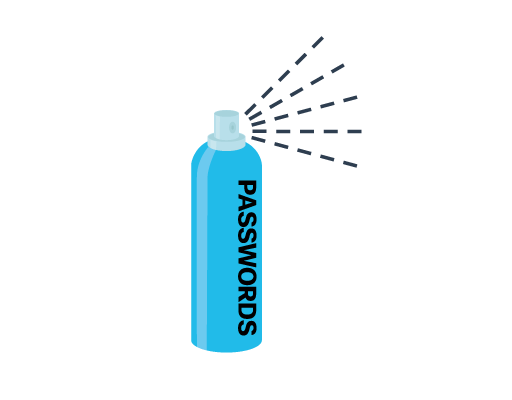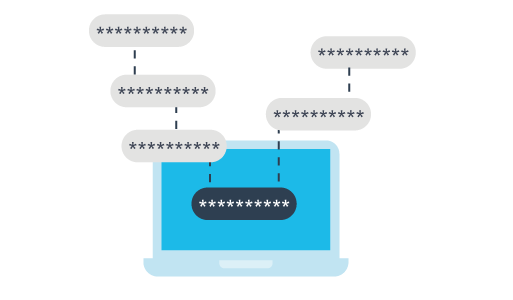Passwordattacks
- published
- reading time
- 2 minutes
Password Attacks
PASSWORD SPRAY

This technique attempts to gain access to a system by ‘spraying’ a few commonly used passwords across a large number of accounts. For example, a cybercriminal uses ‘Password123’ with many usernames before trying again with a second commonly-used password, such as ‘qwerty.’
This technique allows the perpetrator to remain undetected as they avoid frequent account lockouts.
DICTIONARY ATTACKS

A hacker systematically tries every word in a dictionary or a list of commonly used words as a password in an attempt to break into a password-protected account.
BRUTE-FORCE ATTACKS

The simplest and most commonly used way of gaining access to a password-protected site, brute-force attacks see an attacker using all possible combinations of letters, numbers and symbols in the password space until they get it right.
RAINBOW ATTACKS

Passwords in a computer system are not stored as plain text, but as hashed values (numerical values that uniquely identify data). A rainbow table is a large dictionary of precomputed hashes and the passwords from which they were calculated.
Unlike a brute-force attack that has to calculate each hash, a rainbow attack compares the hash of a password with those stored in the rainbow table. When an attacker finds a match, they identify the password used to create the hash.
TRAFFIC INTERCEPTION

Plain text or unencrypted passwords can be easily read by other humans and machines by intercepting communications.
If you store a password in clear, readable text, anyone who has access to your account or device, whether authorized or unauthorized, can read it.